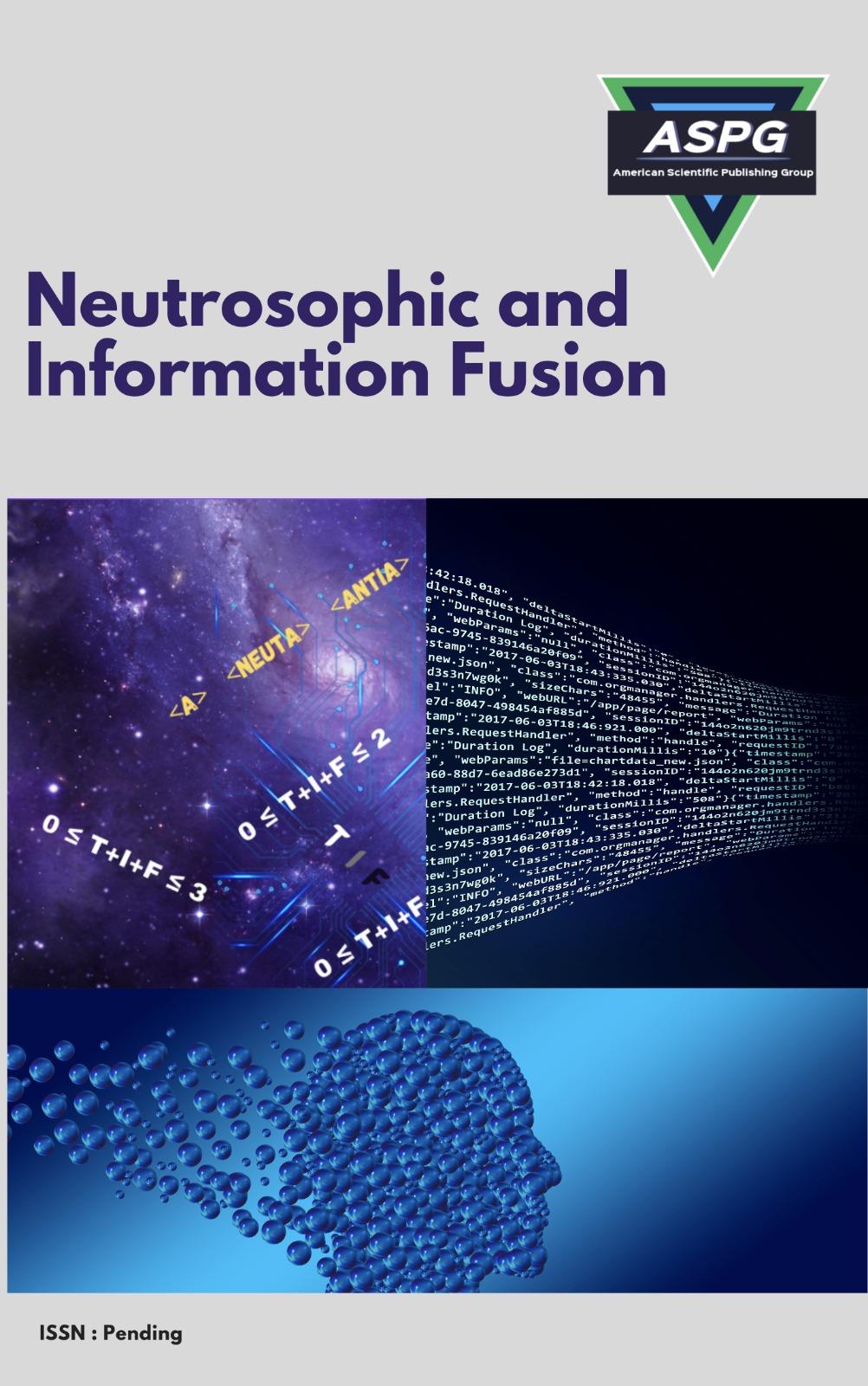

Volume 2 , Issue 2 , PP: 15-23, 2023 | Cite this article as | XML | Html | PDF | Full Length Article
Samandarboy Sulaymanov 1 *
Doi: https://doi.org/10.54216/NIF.020202
This study focuses on the task of maintenance, in pump systems by utilizing a combination of multi dimensional sensor fusion and advanced machine learning techniques. Pump systems play a role in settings but unexpected failures can lead to significant disruptions and operational inefficiencies. The goal of this research is to predict and prevent these failures effectively. To achieve this we analyzed a dataset consisting of 52 sensor units and over 220,000 readings. By applying Principal Component Analysis (PCA) we were able to extract information and reduce complexity gaining an understanding of how the pump system behaves. We then utilized Long Short Term Memory (LSTM) networks to learn from the combined sensor data enabling predictions and early detection of faults that're vital for proactive maintenance strategies. Our findings demonstrate the potential of these methodologies. The integration of sensor data sources and the use of PCA for dimensionality reduction allowed us to obtain a view while LSTM networks effectively captured the temporal dynamics present, in the sensor data leading to precise predictions regarding system behavior.
Sensor Integration , Predictive Analytics , Machine Learning , Data Fusion , Condition Monitoring , Fault Detection , Pump Performance , Prognostics , Sensor Networks , Maintenance Optimization
[1] Tao, Fei, Qinglin Qi, Ang Liu, and Andrew Kusiak. 2018. “Data-Driven Smart Manufacturing.” Journal of Manufacturing Systems 48: 157–69.
[2] Niu, Gang, and others. 2009. “Data Fusion for Machinery Condition Monitoring, Diagnostics and Prognostics.” 부경대학교 도서관.
[3] Liu, Mingfei, Xinyu Li, Jie Li, Yahui Liu, Bin Zhou, and Jinsong Bao. 2022. “A Knowledge Graph-Based Data Representation Approach for IIoT-Enabled Cognitive Manufacturing.” Advanced Engineering Informatics 51: 101515.
[4] Gawde, Shreyas, Shruti Patil, Satish Kumar, Pooja Kamat, Ketan Kotecha, and Ajith Abraham. 2023. “Multi-Fault Diagnosis of Industrial Rotating Machines Using Data-Driven Approach: A Review of Two Decades of Research.” Engineering Applications of Artificial Intelligence 123: 106139.
[5] Qi, Qinglin, Fei Tao, Tianliang Hu, Nabil Anwer, Ang Liu, Yongli Wei, Lihui Wang, and A Y C Nee. 2021. “Enabling Technologies and Tools for Digital Twin.” Journal of Manufacturing Systems 58: 3–21.
[6] Walters, S D, and Cyril Crua. 2011. “Tools and Techniques for Intelligent Characterization of Fuels.” In Sustainability in Energy and Buildings: Results of the Second International Conference on Sustainability in Energy and Buildings (SEB’10), 129–38.
[7] Zhang, Peng, Zeyu Gao, Lele Cao, Fangyang Dong, Yongjiu Zou, Kai Wang, Yuewen Zhang, and Peiting Sun. 2022. “Marine Systems and Equipment Prognostics and Health Management: A Systematic Review from Health Condition Monitoring to Maintenance Strategy.” Machines 10 (2): 72.
[8] Senanayaka, Jagath Sri Lal. 2020. “Online Condition Monitoring of Electric Powertrains Using Machine Learning and Data Fusion.”
[9] Yang, Bin, Shuang Yang, Zhihan Lv, Faming Wang, and Thomas Olofsson. 2022. “Application of Digital Twins and Metaverse in the Field of Fluid Machinery Pumps and Fans: A Review.” Sensors 22 (23): 9294.
[10] Yu, Gang, Dinghao Lin, Yi Wang, Min Hu, Vijayan Sugumaran, and Junjie Chen. 2023. “Digital Twin-Enabled and Knowledge-Driven Decision Support for Tunnel Electromechanical Equipment Maintenance.” Tunnelling and Underground Space Technology 140: 105318.
[11] xu, qingfeng, guanghui zhou, chao zhang, Fengtian Chang, Qian Huang, Min Zhang, and Yifan Zhi. 2022. “Digital Twin-Driven Intelligent Maintenance Decision-Making System and Key-Enabling Technologies for Nuclear Power Equipment.” Digital Twin 2: 14.
[12] Selvaraj, Yoganand, and Chithra Selvaraj. 2022. “Proactive Maintenance of Small Wind Turbines Using IoT and Machine Learning Models.” International Journal of Green Energy 19 (5): 463–75.
[13] Lee, Jay, Fangji Wu, Wenyu Zhao, Masoud Ghaffari, Linxia Liao, and David Siegel. 2014. “Prognostics and Health Management Design for Rotary Machinery Systems—Reviews, Methodology and Applications.” Mechanical Systems and Signal Processing 42 (1–2): 314–34.
[14] Umer, Muhammad Azmi, Khurum Nazir Junejo, Muhammad Taha Jilani, and Aditya P Mathur. 2022. “Machine Learning for Intrusion Detection in Industrial Control Systems: Applications, Challenges, and Recommendations.” International Journal of Critical Infrastructure Protection 38: 100516.
[15] Zhang, Min, and Yifan Zhi. 2022. “Digital Twin-Driven Intelligent Maintenance Decision-Makin g System and Key-Enabling Technologies for Nuclear Powe r Equipment [Version 1; Peer Review: Awaiting Peer Review].”
[16] Aikhuele, Daniel O, Herold U Nwosu, and Desmond E Ighravwe. 2023. “Data-Driven Model for the Evaluation of the Reliability of Sensors and Actuators Used in IoT System Architecture.” Journal of Reliable Intelligent Environments 9 (2): 135–45.
[17] Ambade, Amey, Saniya Karnik, Praprut Songchitruksa, Rajeev Ranjan Sinha, and Supriya Gupta. 2021. “Electrical Submersible Pump Prognostics and Health Monitoring Using Machine Learning and Natural Language Processing.” In SPE Middle East Intelligent Oil and Gas Symposium, D011S004R003.
[18] Wen, Yuxin, Md Fashiar Rahman, Honglun Xu, and Tzu-Liang Bill Tseng. 2022. “Recent Advances and Trends of Predictive Maintenance from Data-Driven Machine Prognostics Perspective.” Measurement 187: 110276.
[19] Abbassi, Rouzbeh, Ehsan Arzaghi, Mohammad Yazdi, Vahid Aryai, Vikram Garaniya, and Payam Rahnamayiezekavat. 2022. “Risk-Based and Predictive Maintenance Planning of Engineering Infrastructure: Existing Quantitative Techniques and Future Directions.” Process Safety and Environmental Protection.
[20] Niu, Gang, and others. 2017. “Data-Driven Technology for Engineering Systems Health Management.” Springer Singapore 10: 978–81.